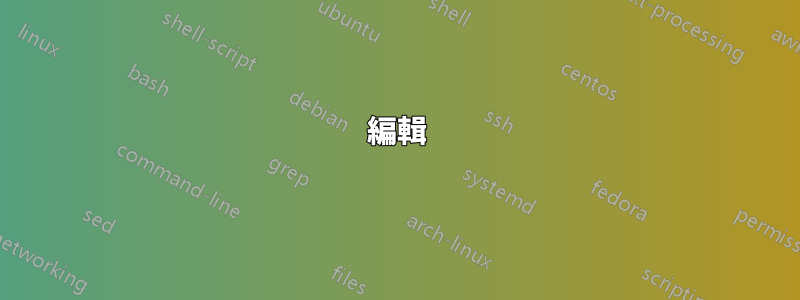
一個圓圈裡有幾個圓圈,每個圓圈都有一個箭頭(最好是彎曲的),指向下一個圓圈。每個小圓圈內都有 $h^*$。我需要 $H$ 靠近「前」圓,$g_1 H g_1^{-1}$ 靠近第二個圓,依此類推。
在第五個圓($g_4 H g_4^{-1}$)之後,我需要一個指向3個點的彎曲箭頭,然後另一個指向第一個圓的彎曲箭頭。如果繪圖的尺寸為 A4 紙的三分之一,那就太好了。謝謝你!
編輯
人們要求我試用,所以這裡是:
\documentclass{article}
\usepackage{tikz}
\begin{document}
\begin{tikzpicture}
\draw[fill=none](0,0) circle (3.0);
\draw[fill=none](1,2) circle (0.5);
\draw[fill=none](1,-2) circle (0.5);
\draw[fill=none](2,0) circle (0.5);
\draw[fill=none](-1,2) circle (0.5);
\draw[fill=none](-1,-2) circle (0.5);
\end{tikzpicture}
\end{document}
現在,我不知道如何繪製那些彎曲的箭頭、點,以及如何手動寫 $h$ 和 $g_i H g_i^{-1}$。
編輯(2)
人們幫助我進行了設計,但是當我將程式碼上傳到新文件時,它向我顯示了以下內容。

我有兩個問題:第一個問題是為什麼它沒有向我顯示正確的程式碼圖?第二個是為什麼我的“xcolor”包現在出現LaTeX錯誤?
答案1
這是一個基本的嘗試。這些值bend left=30和looseness=0.75是透過實驗完成的(我覆蓋了一個半徑圓2並嘗試了一些值)。您可以簡單地透過添加[scale=...]作為可選參數來縮放它tikzpicture,即直接在後面\begin{tikzpicture}。我希望您不希望最後一個箭頭上的三個點與您所描述的完全一樣;我只是用了一個虛線。
\documentclass[convert]{standalone}
\usepackage{tikz}
\begin{document}
\begin{tikzpicture}
\draw (0,0) circle[radius=4];
\node[draw, circle, label=above:\(H\)] (0) at (90:2) {\(h^*\)};
\foreach \i [remember=\i as \j (initally 0)] in {1,...,4} {
\node[draw, circle, label=90-72*\i:\(g_\i H g_\i^{-1}\)] (\i) at (90-72*\i:2) {\(h^*\)};
\draw[->] (\j) edge [bend left=30, looseness=0.75] (\i);
}
\draw[->] (4) edge [bend left=30, looseness=0.75] (0);
% added three dots
\draw[white, thick] (116:2) arc[start angle=116, end angle=136, radius=2];
\foreach \i in {0,1,2}
\filldraw (121+5*\i:2) circle[radius=0.4pt];
\end{tikzpicture}
\end{document}
更新:雖然這是一個相當老套的解決方案,但我只是用白色透支了最後一個箭頭的某些部分,並在想像的圓圈上放置了三個點。中間的點位於兩個節點之間的中間,每個點相距五度。
答案2
的一個變體Gargantuar 的回答很好使用另一個節點\vdots而不是虛線:
\documentclass[border=10pt]{standalone}
\usepackage{tikz}
\begin{document}
\begin{tikzpicture}
\draw (0,0) circle[radius=4];
\node[draw, circle, label={above:\(H\)}] (n0) at (90:2) {\(h^*\)};
\foreach \i [count=\j from 0] in {1,...,4} {
\node[draw, circle, label={90-60*\i:\(g_\i H g_\i^{-1}\)}] (n\i)
at (90-60*\i:2) {\(h^*\)};
\draw[->] (n\j) edge [bend left=30, looseness=0.66] (n\i);
}
\node[circle, rotate=-30, text depth=0.5em] (n5) at (150:2) {\(\vdots\)};
\draw[->] (n4) edge [bend left=30, looseness=0.66] (n5);
\draw[->] (n5) edge [bend left=30, looseness=0.66] (n0);
\end{tikzpicture}
\end{document}
答案3
這是一個使用 的選項chains。
\documentclass{article}
\usepackage{tikz}
\usetikzlibrary {chains}
\begin{document}
\begin{tikzpicture}[start chain=placed {at=(150-\tikzchaincount*60:2)}, every join/.style={->, thick, bend left=15}, chain node/.style={on chain, circle, thick, minimum size=8mm, join}]
\draw[thick] circle[radius=4];
\node[chain node, draw, label={90:$H$}] {$h^*$};
\foreach \i in {1,...,4}
\node[chain node, draw, label={90-60*\i:$g_{\i}Hg_{\i}^{-1}$}] {$h^*$};
\node[chain node]{}; \node[chain node]{};
\foreach \j in {-1,0,1} \fill (150+5*\j:1.93)circle[radius=.8pt];
\end{tikzpicture}
\end{document}
答案4
另一個選擇是梅塔普斯特裡面有標籤,如 OP 草圖所示。我定義了一個nice_label嘗試自動放置標籤的巨集。
\documentclass[border=5mm]{standalone}
\usepackage{luamplib}
\begin{document}
\mplibtextextlabel{enable}
\begin{mplibcode}
beginfig(1);
path outer_circle, inner_circle;
outer_circle = reverse fullcircle % so it runs clockwise
rotated 90 % ... from 12 o'clock
scaled 100mm; % .. and takes up 1/3 of an A4 page.
inner_circle = outer_circle scaled 3/4;
numeric n; n = 6;
path c[];
for t=0 upto n:
c[t] = fullcircle scaled 36 shifted point 8/n*t of inner_circle;
endfor
vardef nice_label(expr s, z, p) =
save r, t, a, b;
picture t; t = thelabel(s, z);
interim bboxmargin := 4;
path a; a = z--center p cutafter bbox t;
path b; b = z--center p cutafter p;
numeric r; r = 1 - arclength a / arclength b;
draw t shifted point r of b
enddef;
for t=0 upto n-1:
if t < n - 1:
draw c[t];
label("$h^{\rlap{*}}$", center c[t] + 2 up);
nice_label(
if t=0:
"$H$"
else:
"$g_{" & decimal t & "}Hg_{"&decimal t&"}^{-1}$"
fi, origin, c[t]);
else:
for dt=-1/16, 0, 1/16:
draw point 8/n*t + dt of inner_circle withpen pencircle scaled 1;
endfor
fi
drawarrow subpath 8/n*(t, t+1) of inner_circle
cutbefore c[t] cutafter c[t+1];
endfor
draw outer_circle;
endfig;
\end{mplibcode}
\end{document}
如果將 LaTeX 引擎設定為lualatex.您應該獲得如下所示的 PDF:
如果你n=6;在頂部附近改變n=7你會得到這個版本...









